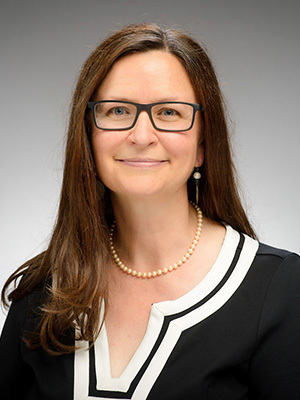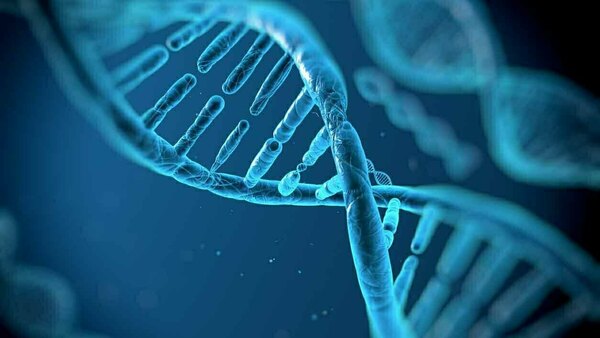‘Silent’ mutations found to have repercussions beyond their own gene
Genetic disorders — like cystic fibrosis and Huntington’s disease — are considered incurable, with gene mutations occurring in essentially every cell of the body.
Gene mutations occur when one nucleotide in a codon is switched. In non-synonymous mutations, this disrupts the codon’s function to code for its amino acid. In synonymous mutations, the codon still codes the correct amino acid. As such, these mutations are dubbed “silent” and often considered inconsequential to human health.

Now, researchers from the University of Notre Dame are adding new evidence to the emerging concept that these silent mutations may have crucial consequences. Their study, published in the Proceedings of the National Academy of Sciences, showed how a synonymous mutation in one gene can significantly affect a neighboring gene, increasing its protein production.
“The dogma in the field right now is that within the protein coding part of the genome, the only mutations that matter are the ones that change the DNA to code from one amino acid to another,” said Patricia L. Clark, the O’Hara Professor of Chemistry and Biochemistry at Notre Dame and lead author of the study. “That’s a very oversimplified view — to the point of being detrimental — of what matters.”
For this study, funded by Clark’s Director’s Pioneer Award from the National Institutes of Health, researchers experimented with the genome of the bacteria E. coli, as its small genome and simple cell structure make it more straightforward to ask fundamental questions about the impact of mutations than human cells. They created nine different synonymous versions of the CAT (Chloramphenicol acetyltransferase) gene, with each using different synonymous codons to encode the CAT protein.
When those different synonymous versions were expressed, they discovered that four of nine synonymous sequences affected the number of CAT proteins synthesized.
“Think about synonymous mutations like a huge quilt of possible DNA sequences that are all going to give you the same protein,” Clark said. “You can pick any part of the quilt and get the same protein, but will you get the same amount of protein? Will the protein fold be the same? Is the cell going to be healthy? This is what we were looking at.”
Clark’s initial hypothesis, as an expert in protein folding, was that these four synonymous mutations might be altering CAT protein folding, which occurs after gene expression. However, the researchers — including first author Anabel Rodriguez, then a doctoral student in Clark’s lab — went on to discover that the impact of the synonymous mutations occurs during the gene expression process, affecting the transcription of DNA to RNA.
“What Anabel showed was that the amount of CAT protein synthesis was correlated to the amount of CAT RNA synthesis,” Clark said. “This indicated that some synonymous mutations screwed up the synthesis of RNA from DNA. That Anabel was able to figure out this novel transcriptional regulation mechanism, while working in a lab with no previous experience studying transcription, is a remarkable achievement.”
The research showed that some of the synonymous mutations created cryptic transcription sites on the CAT DNA strand. RNA polymerase, the enzyme responsible for transcribing DNA to RNA, was binding to these cryptic transcription sites – instead of their expected binding site.
These polymerases synthesized an RNA that started within CAT, but extended to also encode the entire neighboring, upstream gene. In the case of CAT, the upstream gene encodes a repressor protein, so making more of it represses the expression of CAT.
The concept of a synonymous mutation impacting its own gene’s processes has only been considered in the last decade. So the idea that a synonymous mutation on one gene could also affect the transcription and translation processes of a neighboring gene is a significant expansion — and something Clark and her lab plan to further explore.
“There has been an increasing number of landmark studies that show how incomplete our understanding is on the impact of synonymous mutations. We should be considering how these mutations impact all diseases and genetic disorders,” Clark said. “I hope that our study will help accelerate the building of a comprehensive understanding.”
Next, the research team plans to analyze how some of the synonymous mutations of the CAT gene were able to recruit RNA polymerase to the cryptic binding location so efficiently. This is especially intriguing given that the currently available machine learning algorithms have not been able to accurately predict it.
Clark serves as an associate vice president of research and director of the Biophysics Instrumentation Core Facility at Notre Dame. Anabel Rodriguez, former graduate student in Clark’s lab and current instructor at Coastal Carolina Community College, was the lead author of the study.
Other study co-authors include Jacob Diehl, Christopher Bonar, Taylor Lundgren, McKenze Moss, Jun Li, Tijana Milenkovic, Paul Huber and Matthew Champion from Notre Dame; Gabriel Wright from the Milwaukee School of Engineering; and Scott Emrich from the University of Tennessee.
Contact: Brandi Wampler, associate director of media relations, 574-631-2632, brandiwampler@nd.edu
Originally published by at news.nd.edu on August 28, 2024.
Latest Research
- Smarter tools for policymakers: Notre Dame researchers target urban carbon emissions, building by buildingCarbon emissions continue to increase at record levels, fueling climate instability and worsening air quality conditions for billions in cities worldwide. Yet despite global commitments to carbon neutrality, urban policymakers still struggle to implement effective mitigation strategies at the city scale. Now, researchers at Notre Dame’s School of Architecture, the College of Engineering and the Lucy Family Institute for Data & Society are working to reduce carbon emissions through advanced simulations and a novel artificial intelligence-driven tool, EcoSphere.
- Seven engineering faculty named collegiate professorsSeven faculty members in the Notre Dame College of Engineering have been named collegiate professors—a prestigious title awarded by the university and college in recognition of excellence in research, teaching and service. The designation may be conferred on faculty at the assistant, associate or…
- ‘A special challenge’: German studies scholar wins National Humanities Center fellowship for research on medieval womenFor CJ Jones, the joy of research is not the answers but the journey. And the next step on that journey is a fellowship with the National Humanities Center. …
- Notre Dame Lead Innovation Team partners with local WIC program to identify, prevent lead poisoning in childrenB.A.B.E. store “shoppers” now have something new to help their families: free lead screening kits offered by the University of Notre Dame’s Lead Innovation Team.
- Notre Dame Welcomes Ninth Cohort of Warrior-Scholars for Transformative Academic JourneyNOTRE DAME, IN – The University of Notre Dame recently concluded its ninth successful Warrior-Scholar Project (WSP) boot camp, hosting 34 dedicated Warrior-Scholars from June 21st to 28th. This intensive, week-long academic residency provided transitioning service members and veterans…
- Entrepreneurship and Empowerment in South Africa study abroad program celebrates 25 yearsThis year, the Entrepreneurship and Empowerment in South Africa (EESA) program marked its 25th year of operation. EESA is a six-week summer study abroad program that enables students to help historically…













